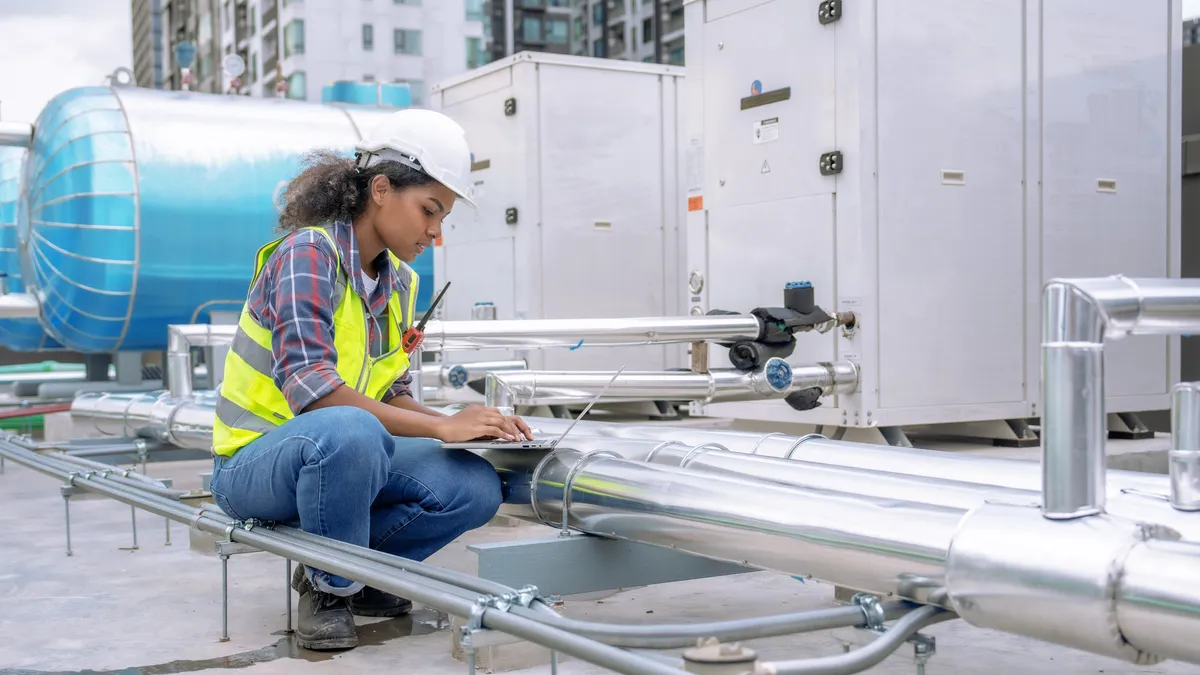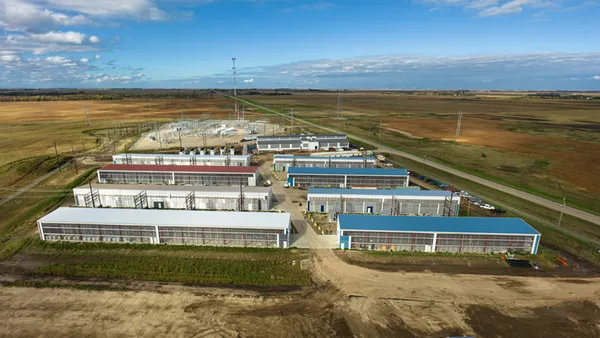Dive Brief:
- The International Energy Agency predicts that the push for building energy efficiency will drive significant job growth in the coming decade, with retrofitting buildings alone estimated to create an additional 1.3 million jobs by 2030 based on a scenario where net-zero emissions are achieved by 2050.
- As part of those expected jobs, key roles will include HVAC installation, insulation and energy auditing, the IEA says. Yet, the U.S. and other countries face labor shortages in these areas, threatening progress toward net-zero emissions, per the agency’s report released in October.
- Training electricians, building designers, glaziers, insulation workers, HVAC and refrigeration mechanics and installers is vital to meeting building energy demand across climates, the IEA says. Many of these roles require apprenticeships and specialized training, which vary by profession. The U.S. faces particular challenges, with 83% of energy efficiency employers reporting hiring difficulties in 2023, according to an August 2024 report from the U.S. Department of Energy.
Dive Insight:
As demand grows across energy efficiency occupations, a trained workforce will be necessary to perform these roles, the IEA says. Its report aims to provide a practical guide that “pilots an approach” to help policymakers identify key energy efficiency jobs and skills in the buildings sector, IEA said in an overview of the report.
In the U.S., common pathways into HVAC/R mechanic and installer roles as well as those that involve pipelaying, plumbing, pipefitting and steamfitting typically involve enrolling in an apprenticeship or secondary educational program, which takes two to four years to complete, the IEA says. Workers seeking jobs as electricians in the U.S. attend a federally registered apprenticeship provided by unions, community colleges, technical colleges, private or non-profit training or adult education institutions — which can take two and a half to four years to complete, including a state certification exam, if the state has one.
Insulation workers and entry-level glaziers tend to have more informal requirements or pathways in the U.S., per the report. Since insulation workers are often hired based on prior experience in the U.S., the IEA says vocational or technical schools, pre-apprenticeships, apprenticeships and potentially even some secondary education is preferred, although not necessarily required. For glaziers, vocational or technical schools, pre-apprenticeships, apprenticeships and some secondary education can help “candidates distinguish themselves in the hiring process,” per the report.
For energy auditors and building inspectors in the U.S., certifications are especially important. While Building Performance Institute certifications are common in the U.S., additional certifications such as Certified Energy Manager and Association of Energy Service Professionals can help individuals advance in their careers, the IEA says.
The report also emphasizes the importance of strong primary education and a solid foundation in reading, writing and mathematics. “Mathematics is particularly important, as being able to calculate electrical loads or convert units is essential” for primary energy efficiency occupations, the report says. The IEA notes that education in science, technology, engineering and mathematics will equip workers with a strong grounding that can enable them to adapt to innovations and new technologies. Although more STEM degrees have been granted in the past decade, the increase in these conferrals is “insufficient to keep pace with demand,” the IEA says.
In the U.S., for example, the percentage of STEM conferrals across all degrees rose from 15% in 2013 to just under 20% in 2020, the IEA says, citing data from its 2023 World Energy Employment report.
Transitioning to more secure and sustainable energy systems also involves digital technologies and an adaptability to new tools that can help match power supply with demand and predict and detect faults in networks, a team of IEA analysts said in a separate paper in June. While the number of digital roles in the energy sector has picked up overall, it remains broadly insufficient, inhibiting greater investment in digitalization, the analysts said. An EY survey of energy professionals, conducted in early 2021, found that 89% of respondents identified skills gaps as a key roadblock to accelerating the adoption of digital technologies.
Digital skills are becoming increasingly relevant in the buildings sector, with digitalization and automation requiring a familiarity with specialized software that will run calculations, the IEA says in its October report. For example, understanding heat pump water heaters and hydronic heat pumps requires a combination of knowledge and experience from two traditionally separate roles — HVAC/R and plumbing to work with water and piping, the IEA says. Modern energy systems like HVAC/R and heat pumps rely on specialized software to run calculations that can manage data and optimize efficiency, per the report, which points to a need for flexible training opportunities.
Dialogue between policymakers, private sector employers and labor unions, including public-private partnerships and employer-driven training, will play a critical role in addressing the labor shortage and directly training workers for skills relevant to the jobs being offered. “Without the involvement of employers,” the report says, “there is a risk of workers investing in training without a clear pathway into employment.”
Interested in more facilities management news? Sign up for Facilities Dive’s newsletter today.
















